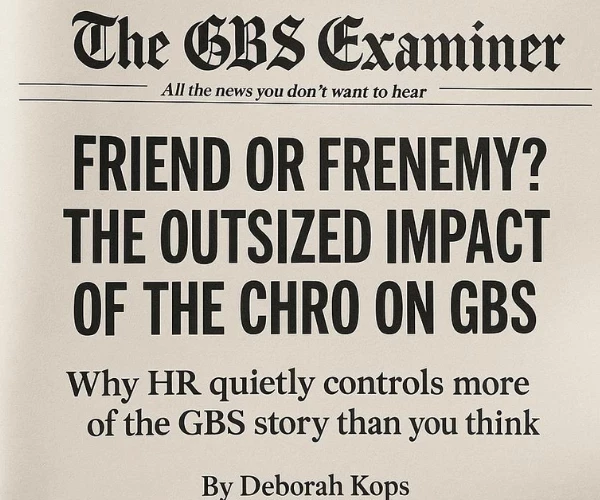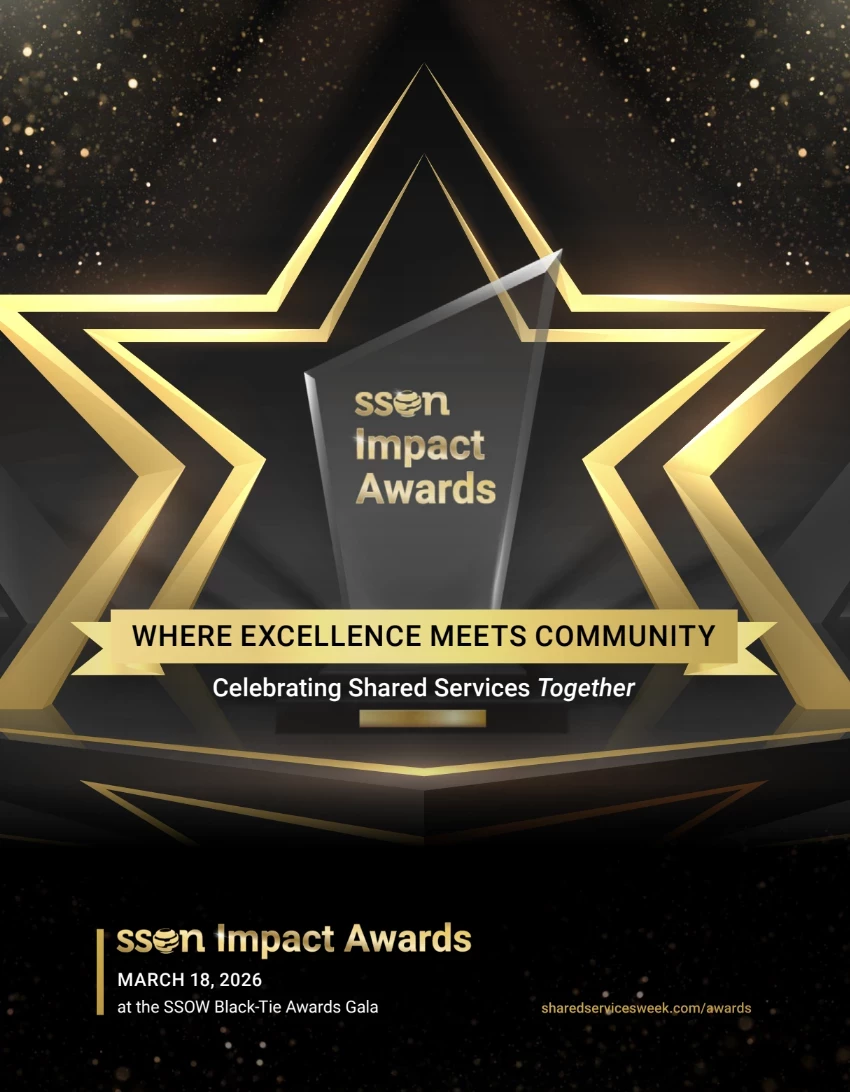
I am not an IT expert. Nor am I a Global Business Services (GBS) professional. Far from it – I am actually a Sales Executive. Yet, over the past several months I have become increasingly convinced that both these topics need serious discussion and action in all enterprises. I was convinced enough to get trained on the topic. And also to seek further advice from an industry veteran, Tony Saldanha, ex-SVP Procter and Gamble GBS, and co-founder of Inixia, offering GBS certification training. Here’s what I have discovered…
The business world needs digital capabilities more than ever. We have witnessed this during the past year, as COVID-19 has pushed companies to increase business agility, increase efficiency and effectiveness, and accelerate the use of new technologies. For companies that took bold steps to embrace transformation, it seems to have worked out well. They seem to have stayed relevant despite the effects of both the pandemic and the Fourth Industrial Revolution.
In a world that is more and more characterized by volatility, uncertainty, complexity and ambiguity, the time for companies to capitalize on investments and to get a distinctive edge on competition is becoming shorter and shorter: return on any investment must be very fast.
In this context, GBS organizations can offer a compelling value proposition.
As background, Business Services is, by definition, something that serves the business: it promises efficiency gains on any transactional work to support the business or the employees among different business units, functions, or brands. These services e.g., Finance, Human Resources, IT, Supply Chain etc., are needed to run the business. Further, they have to be reliable, and they have to be cost‑effective. The industry of Business Services or GBS has existed for over three decades to deliver productivity gains to the parent company. So, you may ask why I think GBS, and digital transformation are suddenly important in our era.
My belief is based upon two pieces of data:
- Digital Transformation is the one of the top-ranked priorities of boards and CEOs globally.
- For most companies, an internally led transformation leveraging an organization which has the blend of skills in process change, digital technologies and change management delivers the best results.
This is why the GBS industry expects to double in value in the next five years.
However, I need to be clear that it is not just any GBS organization that can deliver these results. It takes a professional, mature GBS organization to deliver this.
Let me elaborate. Early stage GBS organizations only deliver transactional services like accounting or payroll at good costs. However, these services do not differ from any other “commodity”, like electricity or the phone line, since reliability and low cost are the only value levers. Obviously, these cannot be the transformation engines of the enterprise.
It is clear that reliability and cost reductions cannot be, by themselves, a sustainable way to create value for the business customer: GBS cost reduction cannot go on forever, reducing cost alone is not motivating for the people involved. The paradigm shift, and the foundation of the next stage, “Run as a Business” (RaaB) model, is the realization that, like any business, GBS organizations need to create ongoing, distinctive value to remain relevant in the long term, and they need to keep innovating to maintain a future proof strategy and portfolio. In this way, GBS stops being the “back-office”, and becomes the “internal consultant” of the company.
Yes, but: how can this vision be achieved? And what is “value” that this mature RaaB model can bring? I will elaborate on this further in this paper.
Principles
- Articulate value in terms of business outcomes i.e. something that Wall Street Analysts would consider exciting. Internal GBS in-process metrics do not cut it.
- The GBS value must be tangible and measurable i.e. “cost avoidance” or better service levels do not count.
- The GBS value must be 360 degree i.e. cost reduction, top line growth, cash, customer experience and digital innovation, for it to be “Wall Street” grade.
- The GBS Value proposition must be credible to your CEO. You cannot promise to be a transformation engine if you struggle with the credibility of being able to deliver basic services and cost reductions.
How to leverage GBS to deliver transformative value
There is a “right way” to approach this transformative value that the GBS organization can bring.
If you have an existing GBS organization, and it has a lower level of maturity, you need to address that first. You need to signal your desire to transform GBS maturity and align business leadership on this intent.
A widespread challenge for GBS organizations, regardless of their background or level of maturity, is that they have to live with a “back-office” equity and with the risk of commoditization: managing and changing this equity and establishing the organization as a credible business partner is a key task of any GBS leader.
Your intent to get to a professional GBS model, will necessitate a commitment to deliver discontinuous financial value. Once this commitment is aligned with the business’ objectives, a professional approach to execute the new GBS is required, and here is where the Run as a Business (RaaB) model for GBS organizations enters the stage.
First and foremost, any strategy must be centred on the business objectives of the company: there is no “one size fits it all” solution.
Start with the business and industry challenge
It is undeniable that businesses around the globe have to face an extreme amount of complexity and volatility, and it is easy to foresee that the pace of change will always be faster and faster.
In the Fourth Industrial Revolution, companies can see the fruits of a new, digital way of doing business, and at the same time are faced with the crude reality of blurred lines between different industries: a company’s potential disruptor will likely not be an incumbent, but a player of another industry or even a start-up. It is easy to lose track of the business value and focus the attention on the glittering promises of marvellous new technologies.
Communicate a clear message track around the value of a Professional GBS
Whatever the business objective, be it operational excellence, market share growth or enhanced transformation and innovation, the distinctive value that professional “Run as a Business” GBS organizations can bring is their ability to act as growth and transformation engines for the company.
How can GBS claim this position? Thanks to the convergence of their skillset to the setting of Digital Transformation, GBS organizations have proven to be much better at delivering distinctive, transformative value than other digital transformation enablers such as Chief Digital Officers. Most CEOs are merging the responsibilities of CDOs with either GBS leaders, CIOs or business unit Presidents, because experiences such as at GE and in Nordstrom has demonstrated that this works better.
Introduce Run as a Business (RaaB) design
The RaaB framework compels Professional GBS organizations to operate within the constraints of the open market and think strategically on growing their contribution to the company business, which is the north star of the value creation effort. This proven methodology to operate GBS at its best allows GBS organizations to rise above their traditional “back-office” label, and even above the status of business partner, and to establish credibility as the internal consultant and actor for growth and transformation.
Keep building credibility by sharing successful “use cases”
Between its other peculiarities, the RaaB model identifies the business as its north star: any solution that a Professional GBS organization provides has to be vetted for its alignment with the business objectives. Nothing builds GBS credibility better than sharing periodic business-transformative use cases. Ironically, an “ounce-worth” of an innovative project to deliver distinctive business objectives ends up being more memorable than several “pounds-worth” of cost savings or service improvements. Here are a few examples of GBS driven innovations from Procter & Gamble that I picked up.
- In 2008 P&G GBS innovated and created innovative leadership team rooms that combined video conferencing, data analytics and visualization, and dedicated data scientist contacts for each leadership team. This was transformative to the way P&G used data to make decisions and was featured in the Harvard Business Review.
- In 2004, they took on the idea of digitizing and virtualizing package design (e.g. bottles for shampoo) when the business priority was focused on increasing speed to market for new products. Using its knowledge of business functions, IT and data, GBS was able to deliver 3 times the designs, at 3 times the speed of normal design processes and at one-third the cost.
Commit upfront, track, and deliver the business outcome metrics
Professional, Run as a Business GBS organizations show dramatically better business outcomes than the average shared Service organization. This statistic is often lost in the confusion that all these organizations are generically thought to be “GBS”. In reality, based on Inixia data, here’s what Professional GBS organizations deliver.
- 50-70% lower service costs
- 3x value creation benefits beyond the typical cost saving of traditional GBS
- Become the digital transformation engine of the enterprise
Smart leaders use this to their benefit: they can forecast very tangible financial targets and then put in place rigorous tracking of benefits to deliver this value as well as build credibility along the way.
Yes, GBS can be a fairly involved topic, but the good news is that organizations do not need to reinvent the wheel. There is a “right way” to approach its creation. And best of all, following the Professional GBS approach, businesses can tap into the transformative value that the GBS organization can bring.
Digital Transformation is hard, but using key internal organizations and proven models is the best approach to set yourself up for success.

|
Inixia is a global provider of business strategy certification, training, and advisory. It was founded by some of the world’s most widely acclaimed thought leaders, strategists, and practitioners with the aim of sharing their experience to help escalate the work and career of others. Inixia uniquely offers expert-led certification courses in shared service strategy and business transformation. inixia.com |



































